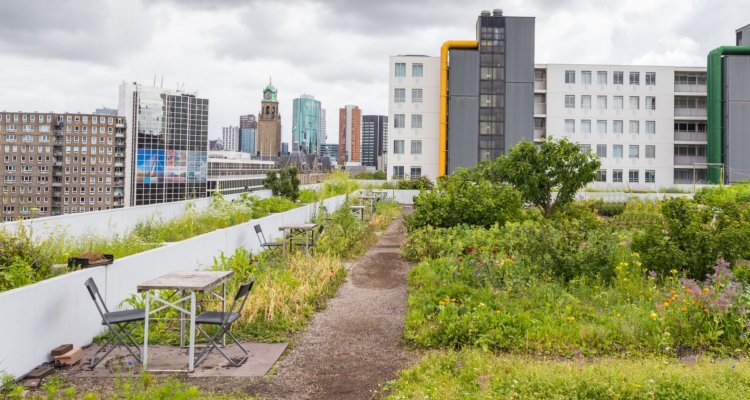
News
Reinventing the City Conference: Eveline van Leeuwen on the pathways towards a sustainable city
‘Large cities, such as Amsterdam, are complex and unpredictable. Still, there are abundant ideas on how to make the city more sustainable,’ says Wageningen University & Research Professor of Urban Economics Eveline van Leeuwen. How can cities arrive at concrete plans? This is the key question during the Reinventing the City Conference, which will take place between 23 and 25 April 2024.
‘Cities are a crucial element in making the world more sustainable and more equitable’, says Eveline van Leeuwen. This is crucial due to the number of people living within cities and their influence on the climate and biodiversity. ‘ We must return to the drawing board.’ And so we are; experiments and plans are launched everywhere. Still, reality can be tough due to the complexity of large cities. Everything is interconnected. ‘ We need improved collaboration between experts with social and technical knowledge and those working on the energy transition and circularity in urban areas. These challenges are parts of a whole.’
Six examples
Hence, hundreds of scientists, policy-makers, students and industry partners will gather to share insights on the city of the future. The lead organiser of the Reinventing the City Conference is the Amsterdam Institute for Advanced Metropolitan Solutions (AMS Institute), which designs and tests sustainable ideas for the city. In addition to being a professor at WUR, Van Leeuwen also serves as the institute’s scientific director. She explains what the city of the future may look like based on six examples.
Positive energy districts
‘Supply and demand of energy from sun, wind or residual warmth from factories are not aligned. Smart household and district-level solutions are needed to store energy or use it when the supply is abundant.’
Circular solar panels
‘Old solar panels are less efficient than new ones, but they often still function well. A solution could be to install these older panels on the roofs of town halls and sports facilities. Thus, older panels can help clubs and neighbourhoods. Social housing is also suited for the reuse of solar panels. Accelerating the energy transition, CO2 reduction, and fighting energy poverty go hand in hand.’
Circular food system
‘Many residual products in the food chain originate in cities. As part of a European project, we install grinders to grind down food residue in residential buildings. Within AMS, we investigate whether these ground residual products can be used to improve the soil on neighbouring farms or as compost for the residents.’
Guiding mobility
Mobility is indispensable but also significantly impacts the use of space and the environment. Experiments are being conducted in Amsterdam to reroute motorised traffic through navigation systems, temporarily closed roads, and possibly by introducing car-free weeks or days. Such experiments provide insight into safety, flow, climate, and noise and odour nuisance.
Green and multifunctional bridges and quay walls
‘When renovating quays and bridges, there is an option to assign these works of art a more multifunctional purpose. There are initiatives underway to store heat from water in quay walls. Another option is to use materials that encourage plant growth when renovating. Plants then also attract animals.’
Biobased and circular concrete and asphalt
‘The construction of homes and roads causes high levels of CO2 emissions. Using renewable materials that sequester CO2, such as wood, opens the way for more sustainable cities. Moreover, concrete and asphalt can be partially made from biobased materials. Construction also generates a lot of waste. New projects can use construction materials from buildings that are being torn down elsewhere. A better system of inventorying available materials is thus needed.’